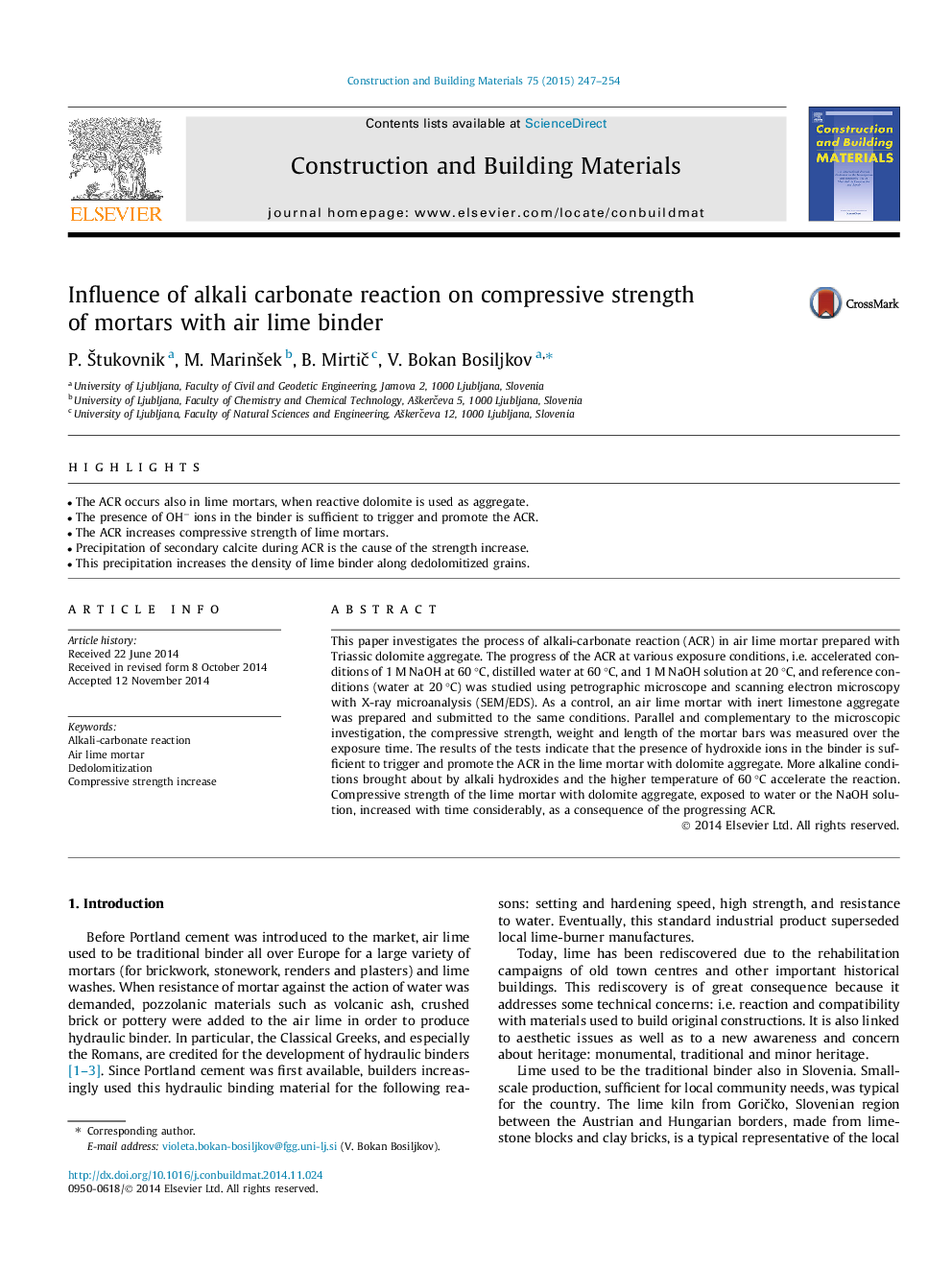| Article ID | Journal | Published Year | Pages | File Type |
|---|---|---|---|---|
| 6721815 | Construction and Building Materials | 2015 | 8 Pages |
Abstract
This paper investigates the process of alkali-carbonate reaction (ACR) in air lime mortar prepared with Triassic dolomite aggregate. The progress of the ACR at various exposure conditions, i.e. accelerated conditions of 1 M NaOH at 60 °C, distilled water at 60 °C, and 1 M NaOH solution at 20 °C, and reference conditions (water at 20 °C) was studied using petrographic microscope and scanning electron microscopy with X-ray microanalysis (SEM/EDS). As a control, an air lime mortar with inert limestone aggregate was prepared and submitted to the same conditions. Parallel and complementary to the microscopic investigation, the compressive strength, weight and length of the mortar bars was measured over the exposure time. The results of the tests indicate that the presence of hydroxide ions in the binder is sufficient to trigger and promote the ACR in the lime mortar with dolomite aggregate. More alkaline conditions brought about by alkali hydroxides and the higher temperature of 60 °C accelerate the reaction. Compressive strength of the lime mortar with dolomite aggregate, exposed to water or the NaOH solution, increased with time considerably, as a consequence of the progressing ACR.
Related Topics
Physical Sciences and Engineering
Engineering
Civil and Structural Engineering
Authors
P. Å tukovnik, M. MarinÅ¡ek, B. MirtiÄ, V. Bokan Bosiljkov,
